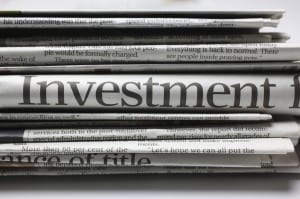 Note: If you venture up to the 8th floor of the Cofrin Library and take a look out at Green Bay, you will see sand bars that normally are under at least a few inches of water. This article from Newswatch: National Geographic details some the possible explanations of what we’re seeing.
Note: If you venture up to the 8th floor of the Cofrin Library and take a look out at Green Bay, you will see sand bars that normally are under at least a few inches of water. This article from Newswatch: National Geographic details some the possible explanations of what we’re seeing.
By Lisa Borre, published Nov. 20, 2012
“For people living around the Great Lakes, water levels this past month have appeared much lower than many will remember. The upper Great Lakes reached near-record low water levels in October. This was most evident on Lake Michigan and Huron, where lake levels dropped to less than two inches (4 cm) above record lows and 28 inches (71 cm) below the long-term average. All five lakes, plus Lake St. Clair, remain below their long-term averages.
Rock and sand recently exposed by low water levels made stretches of the northern Lake Michigan shoreline look like a moonscape. Recreational boaters had trouble navigating the shallow water this fall, and shipping companies lightened loads to compensate for low water. Lakes Michigan and Huron hovered just above a record low set nearly 50 years ago, and Lake Superior was within five inches (11 cm) of record lows set in 1975.
A 2002 National Geographic magazine story, Down the Drain: The Incredible Shrinking Great Lakes, documents declining lake levels and the potential economic and ecological consequences for the region. Ten years later, the story continues to unfold, as water levels remain lower than normal.
Experts blames the recent low water on the unusually warm and dry weather over the past year. Rain events in October, including Hurricane Sandy, delayed the inevitable, but forecasters predict Lakes Superior, Michigan, and Huron will likely reach historic low levels in the late fall or winter, a time of year that the lakes are normally already dropping due to high rates of evaporation.
Low water levels are not the only climate-related trend being observed on the Great Lakes. Ice cover is also declining. The Great Lakes have lost 71% of their ice cover since 1973, according to a study by the Great Lakes Environmental Research Laboratory (GLERL). This past winter, the Great Lakes, including Lake Superior, were virtually ice free with just 5% ice coverage, the second lowest on record. Similar to the global assessment conducted in 2000, loss of ice cover is being reported on lakes throughout North America, Europe, and Asia.
Summer lake temperatures are also on the rise. As mentioned in one of my previous posts about warming lakes, the Great Lakes are among many lakes in the northern hemisphere experiencing a rapid warming trend. Lake Superior, the largest freshwater lake in the world by surface area and third largest by volume (after Baikal in Siberia and Tanganyka in Africa), is also one of the most rapidly warming lakes in the world.
Because lower lake levels are considered one of the potential consequences of climate change, I was curious to find out whether there was any connections to what is being observed on the Great Lakes.
I recently had the opportunity to talk with John Lenters, a lake and climate scientist, while we attended a meeting of the Global Lake Ecological Observatory Network (GLEON) in Mulranny, Ireland. When comparing notes about our personal connections to Lake Superior, I learned that this accomplished scientist, with a laid-back Midwestern manner, first fell in love with the Big Lakes as a 14-year-old boy while on a backpacking trip in Isle Royale National Park. “Although the trip was grueling, I was awed by Lake Superior and realized I wanted to study lakes,” Lenters told me.
Now an associate professor at the University of Nebraska – Lincoln (UNL), Lenters studies lake-climate interactions in the Great Lakes region, the Alaskan Arctic, and western Nebraska. Given the global implications of his research, he joined GLEON in 2008 and helped to form the new Global Lake Temperature Collaboration (GLTC), hosting their first meeting at UNL, this past June. With his boyhood dream as inspiration, he and his collaborators are leading the way to learning more about how climate change is affecting lakes around the world, including the Great Lakes.
On Lake Superior, Lenters and his collaborators are studying the interactions among evaporation, ice cover, and water temperature. Their research builds on works by others in the region (and elsewhere) and provides new insight on factors affecting water levels.”
Surface Water Temperatures Increasing on the Great Lakes
Is it or isn’t it? Click here to read the rest of the article.









